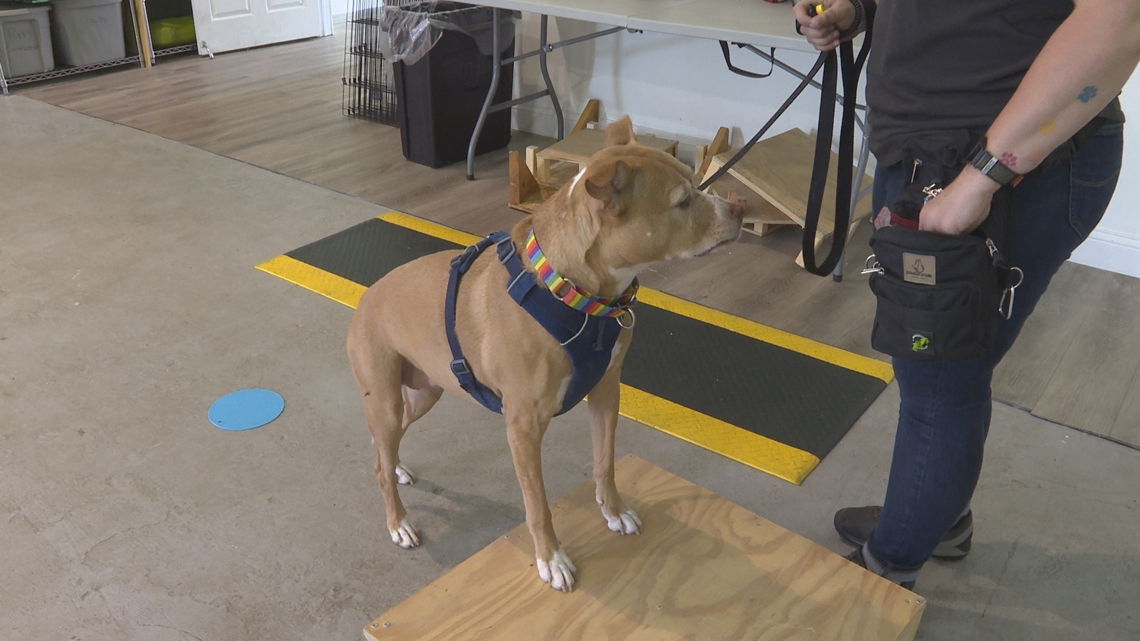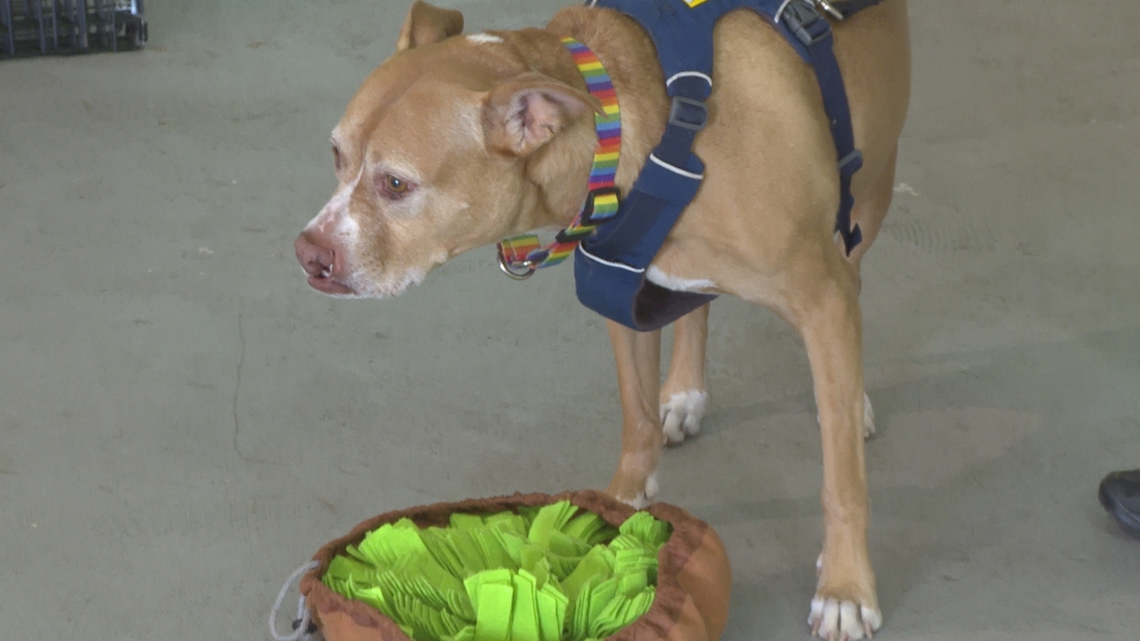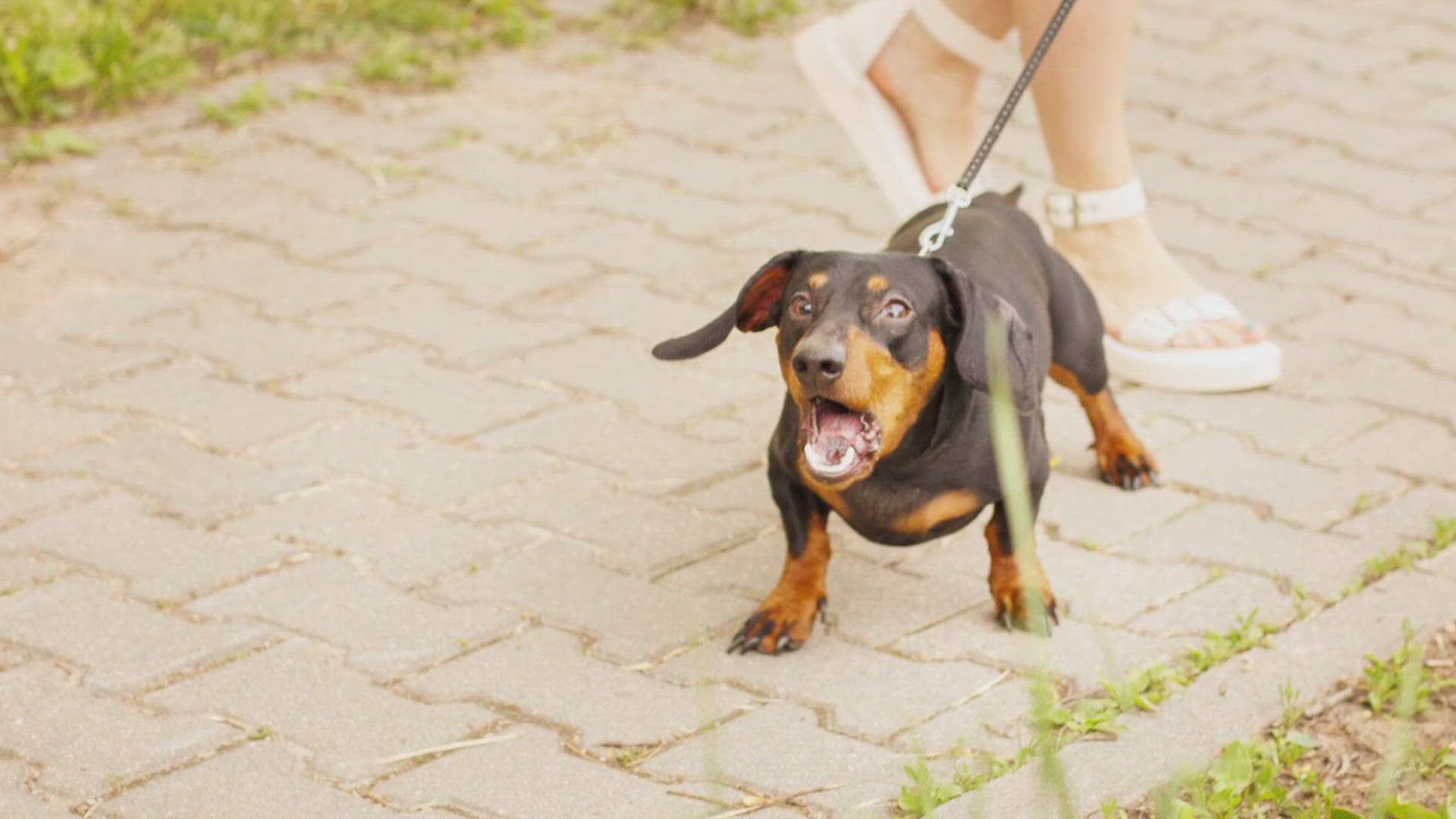BEDFORD HEIGHTS, Ohio — We consider them our babies or best friends. But nothing will put a damper on that relationship quite like your dog - acting like a fool.
We're talking about reactivity. It happens when your dog lunges, barks, or growls uncontrollably at something it sees. It can happen on a walk or in your home—as it watches from a window.
Before you deal with reactivity it helps to understand why it happens.
We're at Sits 'n Wiggles Training Facility with owner Valarie Ross-Smith, who frequently demonstrates training techniques with her dog Grace. But today, it's Phoenix - who happens to be a reactive dog.
Val says there are two main types of causes for reactivity.
"How I define it is a dog's outward expression of frustration. Whether that frustration is fear-based, "I can't get away from this thing!" Or "I can't chase it or go say hi." So we call that more of a frustrated greeter versus a fear reactivity."
Before starting an exercise, it's important to note each reactive dog has a "threshold." It's the point at which their trigger causes them to react. That trigger can be another dog, or passing car, or a person they want to greet. The goal is to start each exercise in the dog's sub-threshold -- meaning your dog is aware of the trigger, but it's not close enough, or their emotions aren't so big that they can't take instruction.
"We want to set both you and your dog up to be successful," Val said.
The first exercise Val and Phoenix demonstrate is called "Paws Up." Val uses a low sturdy platform. You could use an overturned plastic box, washing bow, or even a sturdy fallen tree. You'll also need some of your pup's favorite treats.


"Paws Up" shifts your dog's weight from their front paws to their back.
"So instead of worrying about things that are happening around (Phoenix), she's more thinking about "what is my belly doing? What's my back doing? What are my back legs doing?" And then we can even just kind of stand still and feed while she's working on this. It helps keep the brain thinking instead of getting overly emotional and getting those big feels."
Remember to keep thinking about "threshold" and "sub-threshold" as you do these exercises. As your dog masters each step, you can move them closer or practice the exercise in an area that is closer to those triggers. If you find your dog moving from that "sub-threshold" to "threshold," - take a step back and create a little more distance between your dog and its triggers.
Exercise #2: LATTE - "Look At That Then Enrichment". LATTE helps the dog learn to engage with the environment and decompress in the presence of potential triggers.


"I'll take Phoenix to a park that's kind of busy and set out our snuffle mats in a configuration. When she checks out the (trigger) I'm going to move her to the next snuffle mat. Foraging for food is going to help her process what is happening in her environment a bit better, and help her slow her breathing," Val said.
The third exercise is called Superbowls Pattern Game. It can be used to help your dog learn to approach something that is frightening to them, or gets them overly-excited, while maintaining focus on.
It uses stations to move your dog closer to the trigger. Val used silicone trivets, but anything will work.
"These stations can really be anything out in the wild. I use the seams of sidewalks and we're gonna patiently wait for her to check in with us as we're approaching that thing that could be scary for her. When I put the food down, it kind of distracts her. When she checks in with me, she's telling me she's ready to move forward to the next station," Val explained.
As your dog masters an exercise, you can lessen the distance between them and the trigger. And remember to aim for that sub-threshold.
It's a slow, steady process, but it's rewarding—especially as those big emotions take a backseat to enjoying quality time with you.
Check out more Sits n' Wiggles training videos HERE.

